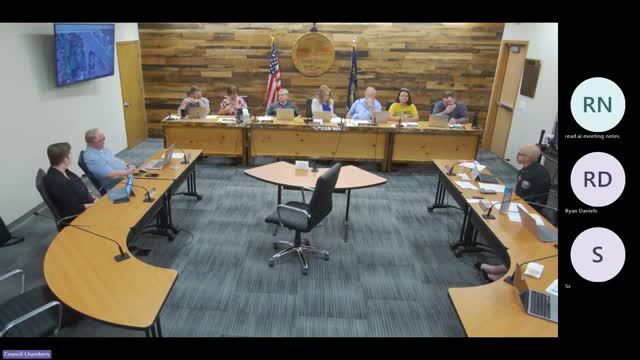City Council Debates Traffic Solutions Amid Safety Concerns
August 27, 2024 | Sweet Home, Linn County, Oregon
This article was created by AI summarizing key points discussed. AI makes mistakes, so for full details and context, please refer to the video of the full meeting. Please report any errors so we can fix them. Report an error »

In a recent government meeting, city officials engaged in a heated discussion regarding traffic safety measures on First Avenue, particularly in response to concerns about dangerous driving behaviors and the potential for accidents. The dialogue centered around the implementation of solid cement barriers to prevent traffic from turning south onto First Avenue from Highway 20, with several council members expressing support for this approach.
One council member highlighted the need for barriers to deter drivers from making unsafe turns, especially during late-night hours when visibility is low. Concerns were raised about the behavior of drivers who might circumvent barriers, leading to potential accidents involving pedestrians and cyclists. The discussion included the possibility of using raised cement barriers or water-filled barriers, with the understanding that any changes would require approval from the Oregon Department of Transportation (ODOT) due to the location's proximity to the highway.
Several council members voiced their apprehensions about closing First Avenue entirely, citing the need for thorough traffic studies to assess the impact of such a decision. They noted that First Avenue serves as a critical route for local residents and commercial vehicles, and closing it could exacerbate traffic issues on surrounding streets. The idea of implementing speed tables was also proposed as a potential solution to slow down traffic without completely shutting down the road.
Despite the urgency of addressing safety concerns, a motion to trial a complete closure of First Avenue for six months was ultimately rejected by the council. Instead, a proposal to purchase and install temporary speed humps was put forward, aiming to evaluate their effectiveness in reducing speeding and improving safety on the road.
The meeting underscored the complexities of traffic management in the community, with officials acknowledging the need for a balanced approach that prioritizes safety while considering the needs of residents and local traffic patterns. Further discussions and studies are anticipated as the city seeks to implement effective traffic solutions.
One council member highlighted the need for barriers to deter drivers from making unsafe turns, especially during late-night hours when visibility is low. Concerns were raised about the behavior of drivers who might circumvent barriers, leading to potential accidents involving pedestrians and cyclists. The discussion included the possibility of using raised cement barriers or water-filled barriers, with the understanding that any changes would require approval from the Oregon Department of Transportation (ODOT) due to the location's proximity to the highway.
Several council members voiced their apprehensions about closing First Avenue entirely, citing the need for thorough traffic studies to assess the impact of such a decision. They noted that First Avenue serves as a critical route for local residents and commercial vehicles, and closing it could exacerbate traffic issues on surrounding streets. The idea of implementing speed tables was also proposed as a potential solution to slow down traffic without completely shutting down the road.
Despite the urgency of addressing safety concerns, a motion to trial a complete closure of First Avenue for six months was ultimately rejected by the council. Instead, a proposal to purchase and install temporary speed humps was put forward, aiming to evaluate their effectiveness in reducing speeding and improving safety on the road.
The meeting underscored the complexities of traffic management in the community, with officials acknowledging the need for a balanced approach that prioritizes safety while considering the needs of residents and local traffic patterns. Further discussions and studies are anticipated as the city seeks to implement effective traffic solutions.
View full meeting
This article is based on a recent meeting—watch the full video and explore the complete transcript for deeper insights into the discussion.
View full meeting
